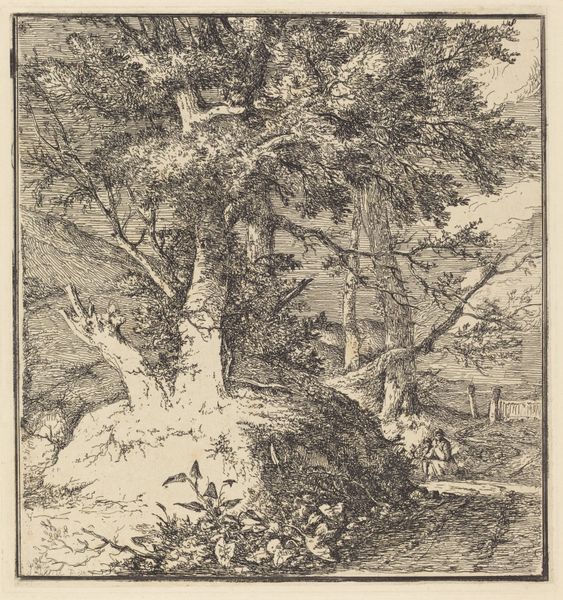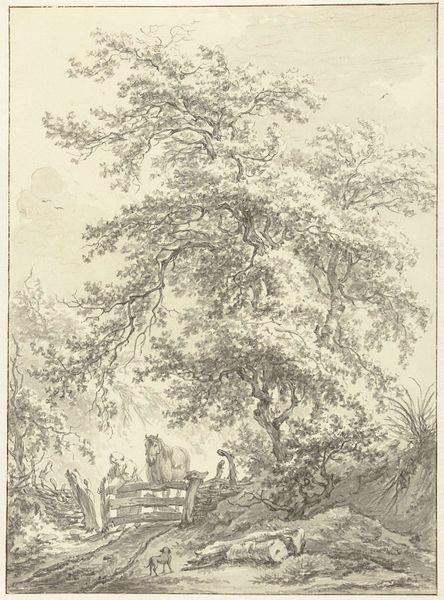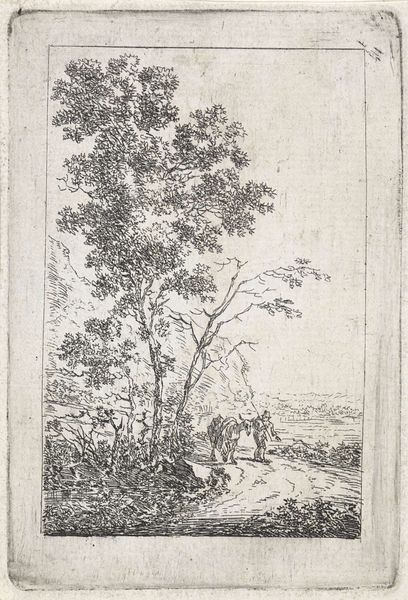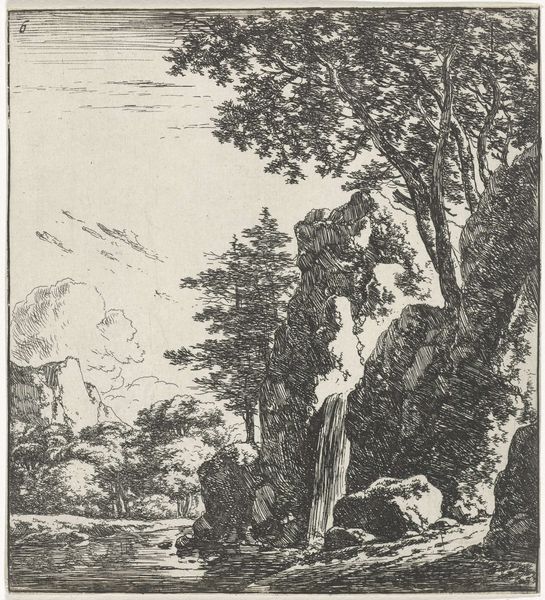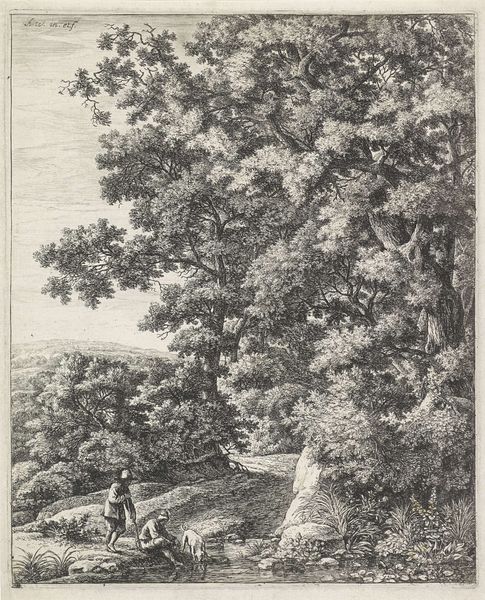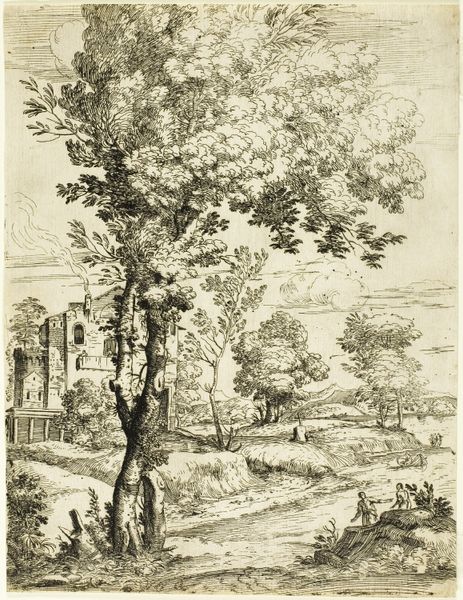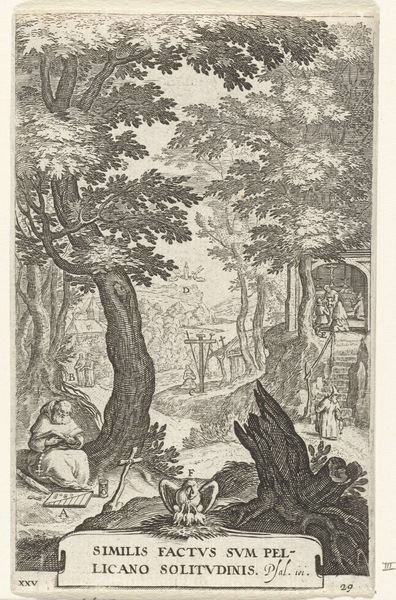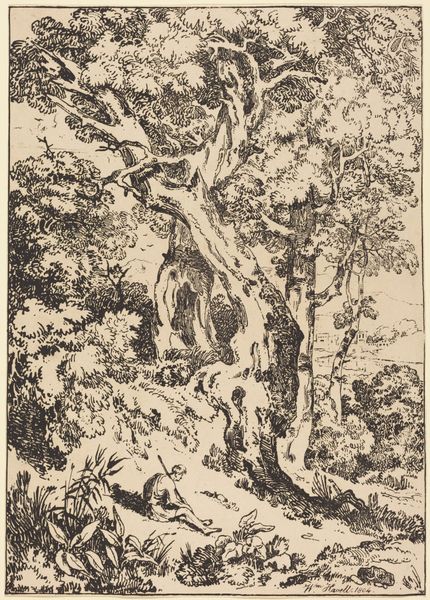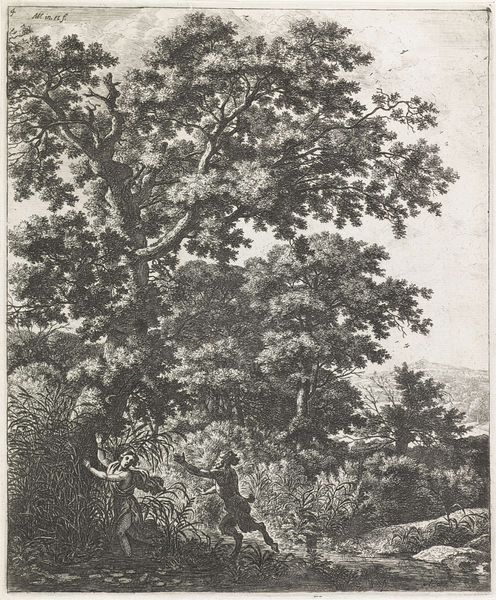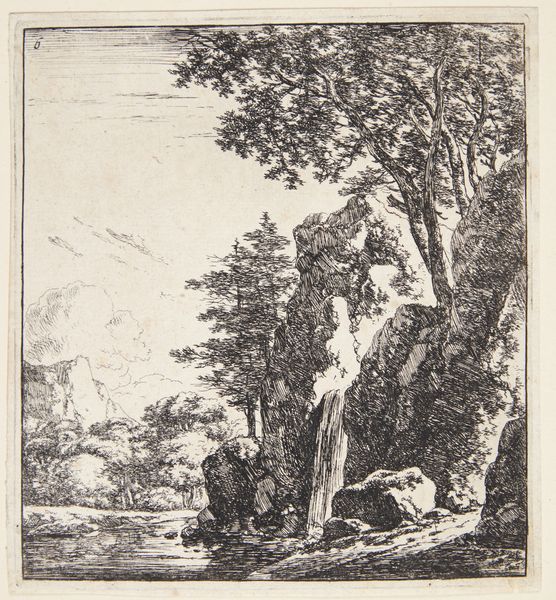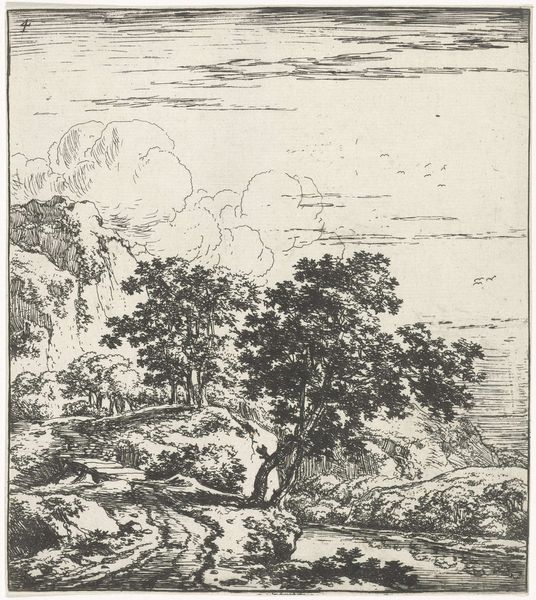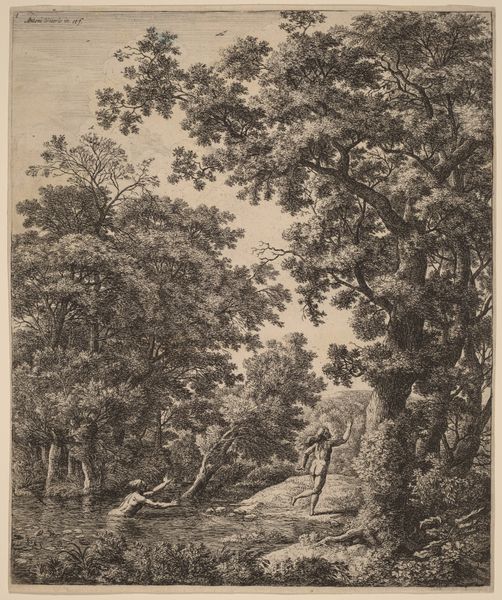
drawing, etching, paper, ink
#
drawing
#
narrative-art
#
etching
#
landscape
#
etching
#
paper
#
ink
#
romanticism
Copyright: National Gallery of Art: CC0 1.0
Editor: Here we have William Havell's "Landscape with Trees, Girl Crossing Footbridge," created around 1804, using etching and ink on paper. The intricate linework gives it such a detailed and almost dreamlike quality. How do you interpret this work? Curator: I appreciate your observation of the linework, for it is truly the framework upon which the work is constructed. Note how the artist uses varying densities of lines to suggest depth and texture, especially in the foliage. What compositional strategies do you observe here? Editor: I see how the bridge creates a strong diagonal, leading your eye into the landscape. And there's a balance between the dense trees on the right and the more open field on the left. Curator: Precisely. The diagonal of the bridge not only guides the viewer but also serves as a spatial divider. Notice, too, how the repetition of shapes, from the rounded forms of the trees to the curves of the bridge's reflection in the water, creates visual harmony. How does this structure invite you to interpret the narrative? Editor: It’s interesting that while the trees create depth with line variations, the people in the landscape are nearly uniform. Maybe to create a greater emphasis on nature and Romanticism? Curator: Perhaps. Do you believe that by creating this distinction he blurs the barriers between art and its message to its audience? It's less of what’s occurring in the work and more about the structures. Editor: Yes! Thank you, I will make sure to keep these things in mind when trying to study other landscapes going forward. Curator: My pleasure. Remembering this work allows us to be much more than passive onlookers!
Comments
No comments
Be the first to comment and join the conversation on the ultimate creative platform.
